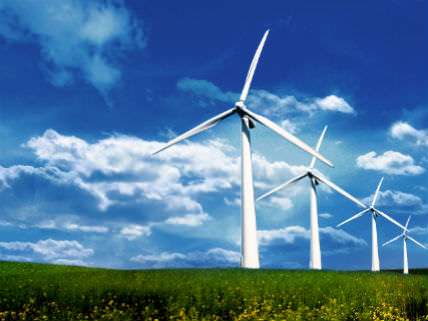Senate: If Wind Power Is Already Competitive Why Does It Need More Subsidies?
Smart unsubsidized private investments in renewable power resources might increase the energy independence of the United States

Today, the U.S. Senate is supposed to vote on an amendment proposed by Sen. Heidi Heitkamp (D-N.D.) that would extend the wind power production tax credit for five years until 2020. Her amendment reads:
SEC. X. SENSE OF CONGRESS REGARDING 5-YEAR EXTENSION OF CREDITS WITH RESPECT TO FACILITIES PRODUCING ENERGY FROM CERTAIN RENEWABLE RESOURCES.
(a) Findings.--Congress finds that--
(1) the energy policy of the United States is based on an all-of-the-above approach to production sources;
(2) an all-of-the-above approach reduces dependence on foreign oil, increases national security and creates jobs;
(3) smart investments in renewable resources are critical to increase the energy independence of the United States, reduce emissions, and create jobs;
(4) wind energy is a critical component of an all-of-the-above energy policy and has a proven track record of creating jobs, reducing emissions, and provides an alternative and compatible energy resource to the existing generation infrastructure of the United States;
(5) the wind energy industry and utilities require long-term certainty regarding the Production Tax Credit for project planning in order to continue build out of this valuable natural resource; and
(6) the stop-start unpredictability of short-term Production Tax Credit extensions should be avoided, as short-term extensions have disrupted the wind industry, slowing the ability of the wind industry to cut costs, as compared to what would have occurred with a long-term, predictable policy in place.
Last year the investment firm Lazard calculated that the unsubsidized levelized cost of on-shore wind power is between $37 and $81 per megawatt-hour. The Energy Information Administration estimates that the levelized costs of wind power is between $71 and $90 per megwatt-hour. This compares to levelized costs for conventional coal power generation between $87 and $114 per megawatt-hour and conventional combined cycle natural gas generation between $61 and $76 per megawatt-hour.
The folks over at the American Energy Alliance, the advocacy arm of the Institute for Energy Research, are against it and claim:
Congress enacted the PTC in 1992 as a temporary kick-start for an infant industry. More than two decades and multiple extensions later, wind lobbyists are still pushing for more handouts.
Unfortunately, this all comes at the detriment of the American taxpayer. The wind PTC amounts to a massive wealth transfer from American taxpayers to multinational wind companies. The one-year retroactive extension of the wind PTC passed at the end of 2014 is estimated to cost the American people $6.4 billion.
If wind power in many cases now costs less than electricity generated using conventional fossil fuels, what is the justification for continuing subsidies to that industry?


Show Comments (51)